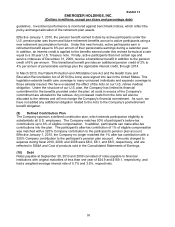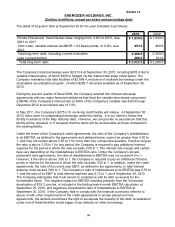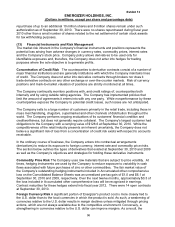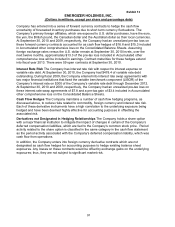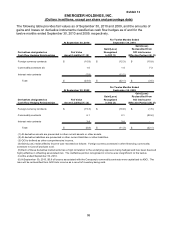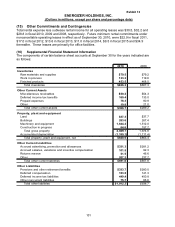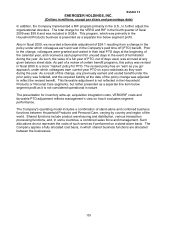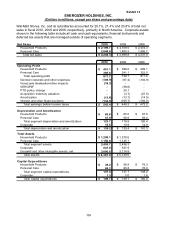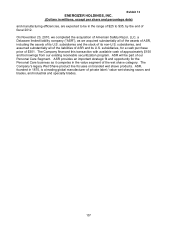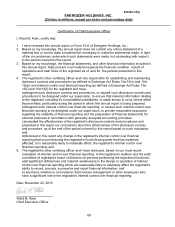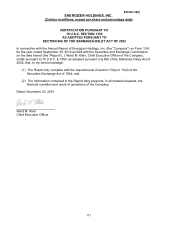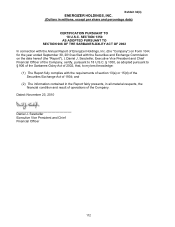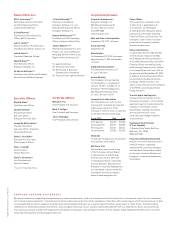Energizer 2010 Annual Report Download - page 113
Download and view the complete annual report
Please find page 113 of the 2010 Energizer annual report below. You can navigate through the pages in the report by either clicking on the pages listed below, or by using the keyword search tool below to find specific information within the annual report.
Exhibit 13
ENERGIZER HOLDINGS, INC.
(Dollars in millions, except per share and percentage data)
103
In addition, the Company implemented a RIF program primarily in the U.S., to further adjust the
organizational structure. The total charge for the VERO and RIF in the fourth quarter of fiscal
2009 was $38.6 and was included in SG&A. This program, which was primarily in the
Household Products business is presented as a separate line below segment profit.
Also in fiscal 2009, we recorded a favorable adjustment of $24.1 resulting from a change in the
policy under which colleagues earn and vest in the Company’s paid time off (PTO) benefit. Prior
to the change, colleagues were granted and vested in their total PTO days at the beginning of
the calendar year, and received a cash payment for unused days in the event of termination
during the year. As such, the value of a full year of PTO, net of days used, was accrued at any
given balance sheet date. As part of a review of certain benefit programs, this policy was revised
in fiscal 2009 to a more “market” policy for PTO. The revised policy has an “earn as you go”
approach, under which colleagues earn current-year PTO on a pro-rata basis as they work
during the year. As a result of this change, any previously earned and vested benefit under the
prior policy was forfeited, and the required liability at the date of the policy change was adjusted
to reflect the revised benefit. This favorable adjustment is not reflected in the Household
Products or Personal Care segments, but rather presented as a separate line item below
segment profit as it is not considered operational in nature.
The presentation for inventory write-up, acquisition integration costs, VERO/RIF costs and
favorable PTO adjustment reflects management’s view on how it evaluates segment
performance.
The Company’s operating model includes a combination of stand-alone and combined business
functions between Household Products and Personal Care, varying by country and region of the
world. Shared functions include product warehousing and distribution, various transaction
processing functions, and, in some countries, a combined sales force and management. Such
allocations do not represent the costs of such services if performed on a stand-alone basis. The
Company applies a fully allocated cost basis, in which shared business functions are allocated
between the businesses.


